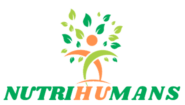iStock
Each of the four phases of a woman’s cycle has its own nutritional needs. See which foods you should eat to have maximum energy and well-being throughout the month.
If you are a woman, you know that your life goes in circles . This season! Cramps, irritation and bloating before you feel sick. Pains, cramps and loss of appetite in the first few days. Loss of energy and fatigue in the following. What you may not know is that the right foods can help you fight the unpleasant symptoms of the period , but also recover the energy and well -being you are looking for in the phases of the cycle when you feel down.
The natural fluctuations of hormones during the cycle can strongly influence various parameters of the body, such as basal metabolic rate, insulin sensitivity and appetite regulation. “Estrogen and progesterone are the main hormones that have to do with the cycle and can affect energy consumption, the utilization of macronutrients and the feeling of hunger,” explains clinical dietitian-nutritionist Kostalenia Kallanioti . “These can affect weight, energy levels and mood.”
Although optimal nutrition varies from person to person, there are specific foods or food groups that can benefit you. In addition, beyond individual foods, your diet as a whole can positively or negatively affect your period. “For example, following a very restrictive diet for long periods of time can affect the regularity of periods. That’s why we should take care to eat properly and healthily at all stages of our cycle”, explains nutritionist Kostalenia Kallanioti.
Stage 1: Menstruation (Days 1-7)
– What is happening to you in this phase of the cycle?
In this phase of the cycle you have your period and you bleed. Usually this lasts up to 7 days (every woman is different) while progesterone and estrogen are at their lowest levels. The menstrual process displays many of the elements of an inflammatory response in the body.
– What foods to eat and why
Focus on anti-inflammatory foods. Some ideas to enrich your menu are seasonal fruits and vegetables, nuts, various spices, such as turmeric, fatty fish, green tea and of course extra virgin olive oil.
In addition, due to the bleeding, you have increased iron losses . Therefore, it is necessary to replenish it by choosing foods rich in this essential mineral, such as red meat (we prefer lean options), poultry, fish, seafood, green leafy vegetables, legumes and dark chocolate. It is good to increase the intake of vitamin C, which increases the absorption of iron, by choosing foods such as fruits (citrus and kiwi), broccoli and peppers.
Stage 2: Follicular Phase (Days 1-13)
– What is happening to you in this phase of the cycle?
The follicular phase starts from the first day of menstruation (ie it coincides for some days with the previous phase) and ends with ovulation. In this phase of the cycle the hormone called FSH makes your eggs develop. Of these, only one will be fully developed over the next few days to be released in the next phase. In addition, during the follicular phase estrogen levels increase and will peak just before ovulation, causing thickening of the endometrium.
– What foods to eat and why
“Usually in this phase of the cycle there are no sharp fluctuations in our appetite or weight. Therefore, it is recommended to follow a balanced diet plan based on the Mediterranean diet , making small and frequent meals. During this phase of the cycle our body tends to rely more on the use of carbohydrates for energy production , rather than fat or protein,” says Ms. Kallanioti.
Therefore, it is recommended to choose whole grain foods , such as brown bread and brown rice, as well as oats, legumes, sweet potatoes and fruits. In addition, the increase in hormone levels can affect our hydration, so we should limit foods or drinks that can lead to dehydration, such as excessive consumption of salt and alcohol.
Studies have shown that during the ovulatory phase of the cycle, the body’s oxidative stress can increase , due to the increase in estrogen levels. Therefore, antioxidant ingredients are of utmost importance in this phase of the cycle, as they protect our cells from free radical damage. Increase your consumption of fresh fruits (especially those in the berry family) and vegetables such as tomatoes, kale and artichokes.
At the same time, eating fermented foods such as yogurt, kefir and pickles contribute to better digestive health, as they contain beneficial probiotics.
Stage 3: Ovulation (Days 14-17)
– What is happening to you in this phase of the cycle?
These two to three days of the month you are in your most fertile phase. In this phase estrogen is at its highest along with other important hormones such as progesterone, FSH and LH, which also cause the release of the egg from the ovaries.
– What foods to eat and why
Prioritize proper hydration. During ovulation, the body temperature rises, so it is very important to take care of your hydration by drinking water or consuming foods with a high water content, such as fruits and vegetables. Foods that are rich in electrolytes are also suitable, such as bananas, avocados and green leafy vegetables.
Since the lack of zinc has been linked to the reduced synthesis and secretion of the FSH hormone, supplementing our diet with sources of zinc (mussels, nuts, beef, tofu) seems to be able to contribute to the smooth outcome of the ovulation process.
In addition, give a base to foods rich in ω-3 fatty acids , such as flaxseed and fatty fish, e.g. the salmon.
Finally, increase your intake of folate and vitamin B12 by eating green leafy vegetables, Brussels sprouts, broccoli, beans, oranges, sardines, reduced-fat dairy, beef and eggs.
Stage 4: Luteal Phase (Days 17-28)
– What is happening to you in this phase of the cycle?
After ovulation, progesterone prepares to reach its highest levels before bleeding starts again. At this stage of your cycle you are likely to experience symptoms of premenstrual syndrome.
– What foods to eat and why
In this phase of the cycle it appears that we may experience higher insulin resistance due to high progesterone levels. That is why it is recommended to choose foods with a low glycemic index, e.g. non-starchy vegetables, fruits such as citrus and apple, whole grains and lentils. Also, in this phase our body needs protein and “good” fats, so we should emphasize lean protein (fish, chicken, low-fat dairy products, egg whites) and mono- and polyunsaturated fatty acids (olive oil, avocado) , walnuts, flaxseed).
If you suffer from period cramps, magnesium could help . Boost your diet with seeds (such as pumpkin seeds and chia seeds), banana, beans, dark chocolate and almonds.
Consume foods rich in vitamin B6 to effectively deal with PMS symptoms. Ideally choose specific fruits (such as orange and papaya), green leafy vegetables, chickpeas , salmon, beef liver and poultry.
In addition, it has been shown that women with a higher intake of calcium and vitamin D are less likely to experience PMS symptoms. Foods rich in calcium are small fish that we eat with the bone, as well as dairy products and reduced-fat cheese, while small amounts of vitamin D can be obtained from sources such as salmon, mushrooms, eggs and fortified cereals.
If you’re constipated during this phase of your cycle, as many women are, increase your intake of soluble fiber from foods like oats and legumes.
Finally, try to relax . If you want to help the smooth regulation of hormones, don’t burden yourself with stress or at least try to reduce it by following simple relaxation techniques like meditation. In this phase of the cycle do not do strict diets or heavy training. All these situations can burden your body and overload it, the exact opposite of what is needed in this phase of the cycle.





